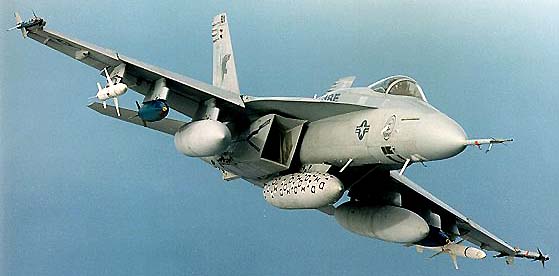
Boeing has begun production of the new distributed targeting system (DTS) for the US Navy F/A-18E/F Super Hornet strike fighter as part of the navy’s F/A-18E/F Network Centric Warfare Upgrades programme and F/A-18E/F Flight Plan.
The Navy had approved low rate initial production following operational testing of the system on Super Hornets at US Naval facilities in California and Maryland, US, between September 2010 and March 2011.
Boeing F/A-18 and EA-18G Mission Systems director Kevin Fogarty said: ‘DTS increases pilot and aircrew situational awareness and precision targeting when engaging air-to-ground targets, in part by using geo-registration technology.’
The geo-registration technology evaluates onboard imagery database images to produce highly accurate target coordinates.
The Boeing-built Super Hornet is a multirole aircraft designed for all missions, including day and night strike with precision-guided weapons, fighter escort, close air support, suppression of enemy air defences, maritime strike, reconnaissance, forward air control and tanker missions.
The versatile combat-proven strike fighter has a suite of integrated and networked systems that provides enhanced interoperability for combatant commander, with a maximum speed of 1,190mph.
The aircraft features GPS / inertial-guided Joint Direct Attack Munition (JDAM), joint stand-off weapon and joint air-to-surface stand-off missile, including 11 weapon stations.
The weapon stations involve two additional wing store stations to support a full range of armaments, including AIM-9 Sidewinder, AIM-7 Sparrow and AIM-120 AMRAAM air-to-air missiles, and guided air-to-ground weapons.
Initial operational capability of the DTS is expected to be achieved in January 2013. Currently, the US Navy has more than 480 twin-engine F/A-18E/F aircraft.
Image: Boeing begins production of the new Distributed Targeting System for use on US Navy F/A-18E/F aircraft.




